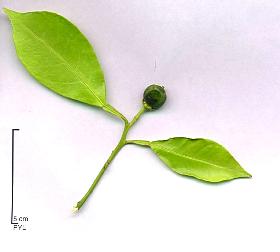|
 Etymology: "Citrus" comes from a Greek word for "lemon" and "Aurantium" comes Latin meaning "gold", allusion to the colour of the fruit. Etymology: "Citrus" comes from a Greek word for "lemon" and "Aurantium" comes Latin meaning "gold", allusion to the colour of the fruit.
Origin: Sour Orange is native to India. It is introduced into Palestine by the Arab caravans, then, from there, imported to Europe by the Crusaders in the XIIth century.
Habitat: except the Mediterranean coast, French climate is too cold for citrus fruit, Sour Orange Trees, orange trees and lemon trees. It is necessary to shelter them in winter in a not heated room, but frost free.
Height: 15 m tall. It is bigger than the Orange tree.
Leaves alternate and persistent, oval, pointed, glazed. As the leaf of the orange tree, they have a winged petiole (flat and broad) 1 cm long.
White flower, in 5 petals. It hatches at the axil of leaves. Autofecund, the sour orange does not need another tree to be pollinated and to give fruits from the first year.
The fruit (bitter orange or bigarade) is not edible.
Uses: the bigarade is used tinned or stewed (jam, syrup). Flowers serve for preparing perfumes as essence of neroli. The zest enters in the composition of triple dry, of bitter, of Grand Marnier and Cointreau. The bark of the sour orange serves for preparing bitter tonic drinks often described "Bitter" or soft liqueurs as the curacao. |